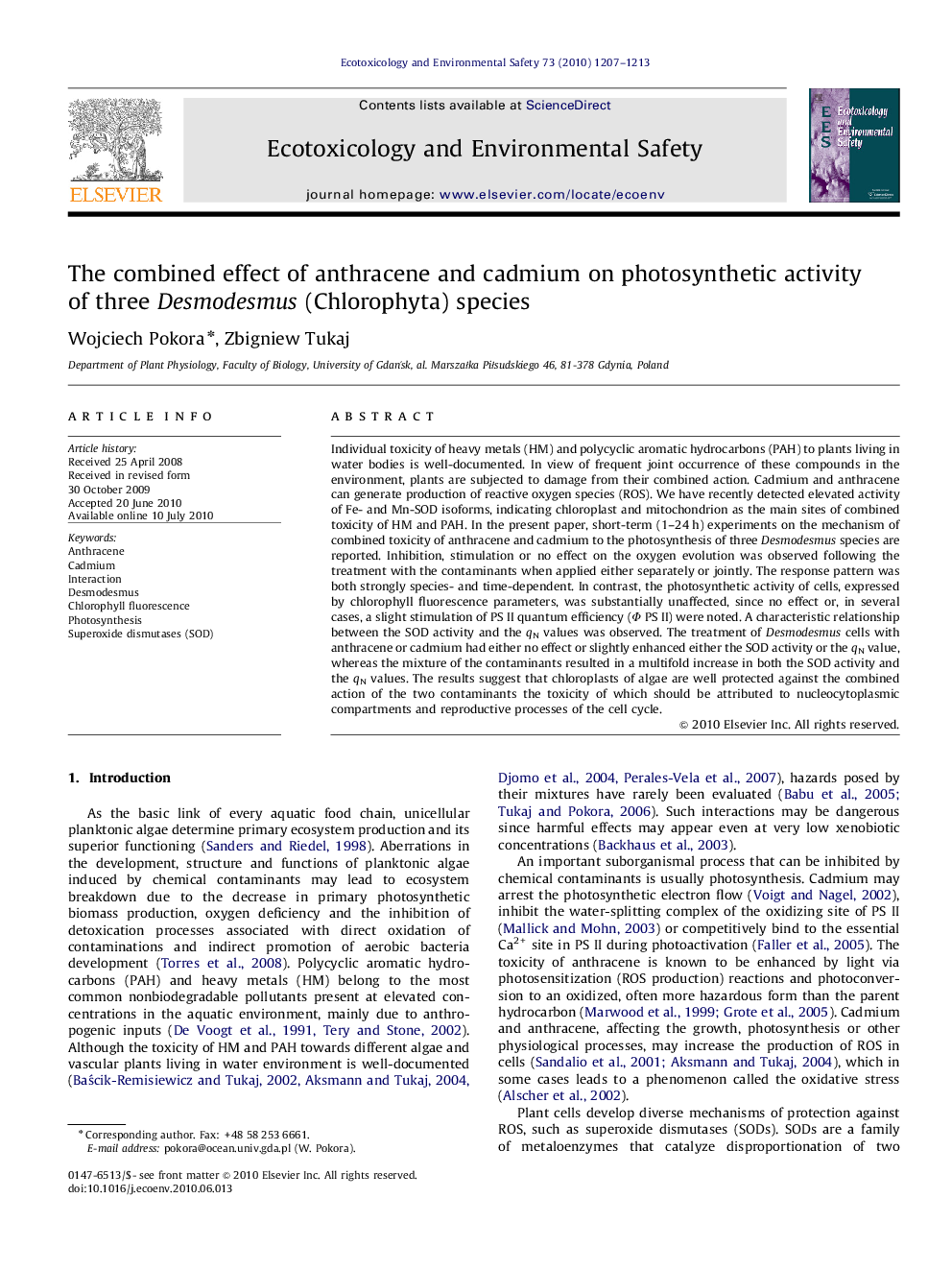| Article ID | Journal | Published Year | Pages | File Type |
|---|---|---|---|---|
| 4421138 | Ecotoxicology and Environmental Safety | 2010 | 7 Pages |
Individual toxicity of heavy metals (HM) and polycyclic aromatic hydrocarbons (PAH) to plants living in water bodies is well-documented. In view of frequent joint occurrence of these compounds in the environment, plants are subjected to damage from their combined action. Cadmium and anthracene can generate production of reactive oxygen species (ROS). We have recently detected elevated activity of Fe- and Mn-SOD isoforms, indicating chloroplast and mitochondrion as the main sites of combined toxicity of HM and PAH. In the present paper, short-term (1–24 h) experiments on the mechanism of combined toxicity of anthracene and cadmium to the photosynthesis of three Desmodesmus species are reported. Inhibition, stimulation or no effect on the oxygen evolution was observed following the treatment with the contaminants when applied either separately or jointly. The response pattern was both strongly species- and time-dependent. In contrast, the photosynthetic activity of cells, expressed by chlorophyll fluorescence parameters, was substantially unaffected, since no effect or, in several cases, a slight stimulation of PS II quantum efficiency (Φ PS II) were noted. A characteristic relationship between the SOD activity and the qN values was observed. The treatment of Desmodesmus cells with anthracene or cadmium had either no effect or slightly enhanced either the SOD activity or the qN value, whereas the mixture of the contaminants resulted in a multifold increase in both the SOD activity and the qN values. The results suggest that chloroplasts of algae are well protected against the combined action of the two contaminants the toxicity of which should be attributed to nucleocytoplasmic compartments and reproductive processes of the cell cycle.
